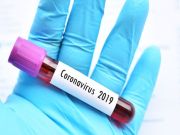210 symptomatic persons tested for 2019-nCoV; overall, 11 persons had laboratory-confirmed disease
MONDAY, Feb. 10, 2020 (HealthDay News) — Recognizing individuals at risk for 2019 novel coronavirus (2019-nCoV) infection is a key part of facilitating infection control and prevention and limiting transmission, according to research published in the Feb. 7 early-release issue of the U.S. Centers for Disease Control and Prevention Morbidity and Mortality Weekly Report.
Kristina L. Bajema, M.D., from the CDC in Atlanta, and colleagues describe evaluation processes for 2019-nCoV in the United States in January 2020.
The authors note that the CDC and U.S. Department of Homeland Security’s Customs and Border Protection began health screenings at U.S. airports on Jan. 17, 2020, to identify ill travelers returning from Wuhan City. The CDC Emergency Operations Center was activated on Jan. 21, and the process of inquiries was formalized for persons suspected of having 2019-nCoV infection. The CDC had responded to inquiries from public health officials and health care providers to assist in assessing about 650 persons thought to be at risk of 2019-nCoV infection as of Jan. 31, 2020. Two hundred ten symptomatic persons were tested for 2019-nCoV; of these, 70, 20, and 9 percent had travel-related risk only, close contact with an ill laboratory-confirmed 2019-nCoV patient or person under investigation, and had both travel- and contact-related risks, respectively. Of the latter 18 persons, 11 had laboratory confirmed 2019-nCoV infection.
“A coordinated national effort to diagnose 2019-nCoV among persons at high risk for infection is important to facilitate appropriate management and limit transmission in the United States,” the authors write.
Copyright © 2020 HealthDay. All rights reserved.








